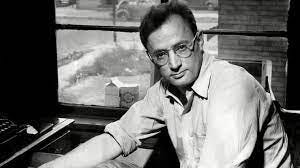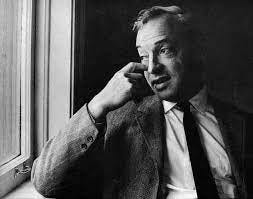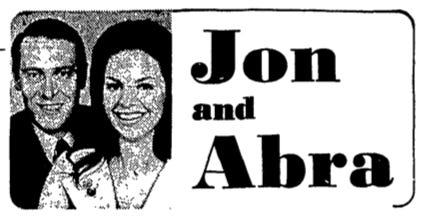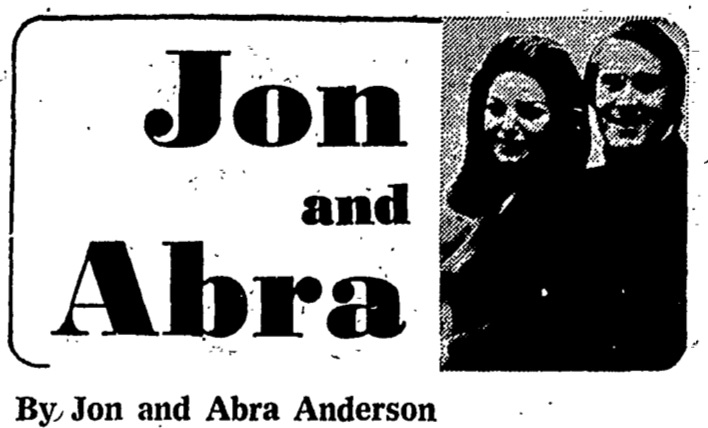THIS CRAZY DAY IN 1972: What does Fitz have against Nelson Algren?
Literary Supplement #1
To access all website contents, click HERE.
Why do we run this separate item peeking into newspapers from 1972? Because 1972 is part of the ancient times when everybody read a paper. Everybody, everybody, everybody. Even kids. So Steve Bertolucci, the 10-year-old hero of the novel serialized at this Substack, read the paper too—sometimes just to have something to do. These are some of the stories he read. Follow THIS CRAZY DAY on Twitter: @RoselandChi1972.
TCD1972 will soon return to its timeline, first focusing on 1972’s most controversial Chicago political race—the bitter campaign for Cook County State’s Attorney, then moving on to the momentous Election Day week.
But we begin the year with several 1972 Literary Supplements.
Today, we examine a Tom Fitzpatrick column about Saul Bellow, which contains a completely gratuitous swipe at Nelson Algren. I had a hard time focusing on Bellow because I kept wondering, “What’s that all about?”
So let’s look at Fitz’s Saul Bellow column, and then explore the Algren dig.
FYR, a tiny primer: In 1972, the most famous living writers in Chicago were Nelson Algren, Saul Bellow and Gwendolyn Brooks, all of the same generation, all nationally renowned, and all writing vastly different oeuvres. As we do these occasional literary supplements, we’ll also look at some of the other equally wonderful writers in town in 1972 who aren’t national and international stars, like Harry Mark Petrakis.
Today the focus is on Bellow, with a side of Algren. A future Literary Supplement will give more bio and literature overview to Bellow. I freely admit that I need to read more Bellow first. Too much of his work is a gaping hole in my library. I’ve collected the major early works when I’ve spotted a good hardback copy at this sale or that, but never gotten around to opening them up. Sometimes it feels unfair that buying a book isn’t enough to deposit its contents in my brain and soul. I’m going to assume that Bellow is so famous, that Older Readers have done the reading that I haven yet to finish, while Younger Readers at least know his name.
Algren was born in 1909, Bellow in 1915. Both were born further north (Bellow, Quebec; Algren, Detroit) but came to Chicago with their families as youngsters and grew into writers inextricably identified with our fair city. Bellow’s family was Jewish, and he grew up in Humboldt Park. Algren was half Jewish German, half Swedish, but as an adult he settled in the Northwest Side’s Polish community, most famously at 1958 W. Evergreen. (Algren’s family actually lived first in the South Side’s Park Manor, explaining his White Sox fan status, later moving to the North Side’s Albany Park.)
Nelson Algren wrote about the down-and-out dregs of society, and always maintained the status of an upstart outsider, even after winning the first ever National Book Award for his novel “The Man With The Golden Arm.” His only regular jobs were occasional teaching gigs, and at least once he ditched a summer position to go partying with a student. Bellow was more respectable, becoming a professor at the University of Chicago. He would go on to win three National Book Awards, the Nobel Prize for literature, and a Pulitzer.
As far as their work goes: If you’ve read Algren and Bellow, you have your own opinions. If you haven’t, don’t wait for them for to be fashionable again!
March 16, 1972
“Saul Bellow sat on a folding chair on the slanted stage in Loyola University’s Mertz Hall,” writes Fitz. “In just a few minutes, Bellow would be invited to the lectern to begin one of his all too rare public appearances.
“Bellow may well be the best writer of our time. But he is a private man in an era that has been usurped by writers such as Norman Mailer, who are constantly before the public eye not only as writers but as participants and even antagonists in late night TV talk shows as well as protest demonstrations in the streets.”

“We see Mailer on the Dick Cavett show and know immediately that he is outrageous and witty—and even courageous…But we know nothing of Bellow other than his books and the fact that he is on the faculty at the University of Chicago. Unlike Nelson Algren, he is not mentioned in the afternoon gossip columns and unlike every other publicity-seeking author around there are not continuing reports that this or that novel is about to be turned into a movie.”
“And so all we can do is wonder. Is Bellow really Augie March? Does he secretly feel that he would be Eugene Henderson if he only had the courage to chuck it all? Or is he Moses Herzog?And where does Mr. Sammler fit into the pattern?”
Now Fitz goes through the de rigueur exercise of mocking some students by eavesdropping and quoting them uncharitably. FYR: The now archaic term “co-ed” meant “female college student.” A male college student was called “a college student.”
“‘That’s him,’ a co-ed in the second row said, after noisily removing her leather coat. ‘He looks just like his pictures. But he’s better dressed than I thought he’d be.’”
The co-ed’s co-ed companion thinks Bellow is a “really good writer,” except she has “trouble” getting through his books. “They’re too deep for me, I guess,” she tells the first co-ed.
Bellow approaches the lectern to a smattering of applause, except Fitz uses the word “spattering.” I wonder if that’s a typo, or if people used to say “spattering” instead of “smattering.” It makes more sense, actually.
“He looked nervous,” Fitz notes. “Bellow’s hair looked almost white in the darkened theater. He is slim and his suit was well cut. Bellow dresses like a man who spends a lot of time deciding which suits he will buy and even more time in front of his closet deciding which one of them he will wear on a given occasion.”
Bellow reads portions of “Henderson the Rain King” first, telling the students that he wrote it by dictating to a stenographer every day from 8 a.m. to 1 p.m., then again every evening, because he was behind schedule and owed the publisher $10,000.
“I worked that way for an entire summer during a time of great personal difficulty,” Bellow tells the audience. “The worse things grew for me personally the more amusing I began to think the whole thing was.”
Bellow went on to read a portion of “Herzog,” finishing to “a round of applause enthusiastic enough for a political candidate or a nightclub comic,” writes Fitz. “Saul Bellow, the writer some students consider too ‘deep’ had turned them all on by reading in person the words that are too opaque for them to understand while reading alone.”
I’m not sure Fitz’s sweeping assessment is fair, even to the co-ed who made too much noise taking off her coat to suit Fitz. I mostly admire Fitz’s columns, but he’s a bit snarky today, IMHO.
Some Bellow observations:
“The worst part for a writer is to re-read something he has written and find that it is absolutely disgraceful. You can’t get rid of it anymore and you’d go mad visiting all the libraries trying to destroy it.”
“If the idea doesn’t wildly excite you, it’s better not to go ahead. There are enough boring things being written anyway. The world is choked with it.”
“I grew up here in Chicago in Humboldt Park. There were no writers there. It was a working class neighborhood. Later I went to Greenwich Village and then Paris and lived in cold-water flats. I smoked pot and hacked around writing book reviews.”
Bellow finished to renewed applause.
“Bellow smiled nervously and nodded his head in gratitude,” Fitz concludes. “He is not an accomplished stage performer like Mailer. Saul Bellow is just a very fine writer who may be the best we’ll see in our time. That ought to be enough.”
Now, what about that dig at Nelson Algren? “Unlike Nelson Algren, he is not mentioned in the afternoon gossip columns…”
Also, note just before that Algren dig, Fitz called Norman Mailer “outrageous and witty—and even courageous”—when Norman Mailer is surely hands down the biggest jerk in 20th century American letters. I mean, he stabbed his wife. I checked to make sure I remembered that correctly. Wikipedia: “During a November 1960 party celebrating his mayoral candidacy, American public intellectual Norman Mailer twice stabbed his wife Adele Morales with a pen-knife in a drunken altercation, nearly taking her life.”
Nelson Algren was a difficult personality by most accounts, though he didn’t stab anyone. If memory serves, Rick Kogan succinctly recalled Algren as “an asshole” during the Chicago Literary Hall of Fame’s ceremony last fall to present Rick with its Fuller Award for Lifetime Achievement. Still, I wonder what Fitz’s specific beef was with Algren.
It’s interesting that Fitz specifies “afternoon” gossip columns. That leaves out Kup in the Sun-Times, and all the various gossipy items in the Tribune. Fitz can only mean the Daily News or Chicago Today, created out of Chicago’s American in 1969.
Chicago Today, alas, is not searchable digitally. Algren and Bellow both have far too many Daily News hits in the decade preceding 1972 to slog through, so I narrowed the time period to January 1, 1971 through Fitz’s column on March 16, 1972. In that 13 1/2 month period, Saul Bellow made the Daily News 24 times, Algren only 14 times. Astonishingly, they both appeared in gossip columns exactly five times—split between Jon & Abra and Herguth’s People.
So Fitz’s crack about gossip columns is not accurate. I think Fitz either just didn’t like Nelson Algren—probably not uncommon—or Fitz didn’t like Nelson Algren because he was friends with Mike Royko, and there may have been friction between Fitz and Mike Royko.

I’d love to find out more on the Royko-Fitz relationship, but for now, I can say this:
Richard Ciccone notes in his biography of Royko, “A Life in Print,” that Royko was very jealous of other writers, and that Royko never dropped the automatic overall rivalry with competing newspapers. That included the Sun-Times, even after Field Enterprises bought the Daily News and housed the two papers in the same building on the north bank of the Chicago River, now replaced by Trump Tower.

It was a somewhat uneasy coexistence. The city rooms of the Daily News and the Sun-Times shared one huge floor of the old building, split down the middle by a wire room. Former Tribune editorial board member John McCormick, who worked as a Daily News copyboy in the early ‘70s, recalled for my Chicago Newspapers Circa 1972 chapter that there was only one reason that Daily News personnel were allowed to cross the line into the Sun-Times city room: to access a joint filing cabinet for storing material to be returned to the newspaper morgues.
So Fitz was the leading news columnist at the rival paper sharing the building with the Daily News. It figures that Mike Royko wouldn’t like him, if that is indeed the case. [Note: Bob Greene’s column in the Sun-Times was still quite short and stuffed into the back pages at the start of 1972, then gradually moved forward more often during the 1972 presidential campaign, growing longer and more prominent. In 1971, Jon and Abra still refer to Bob Greene as a “reporter,” not a “columnist,” and yet he was already coming out with a book compilation of his work to that point—“We Didn’t Have None of Them Fat, Funky Angels on the Wall of Heartbreak Hotel.” We’ll get to Bob Greene in future posts.]
To illustrate the strained relations between the papers, and the possibly strained relations between Royko and Fitz, we have the following newspaper archeological nugget from the April 1973 Chicago Journalism Review. Ironically, it’s from Leonard Aronson’s CJR “GOSSIP” column:
There’s one other thing that Fitz could conceivably mean when he refers to Nelson Algren appearing in afternoon gossip columns:
In 1967, Nelson Algren was riding in a car that was stopped by police, who found a joint (FYR: hand rolled marijuana cigarette) in the car. Chicago’s American gossip columnist Maggie Daly wrote an over-the-top item about the episode that so infuriated Algren, Mike Royko literally let Algren take over his column for a day to answer her.
You’d like to see Algren’s Mike Royko column, right? And so you shall—but of course that must run in a Weekend Edition of Mike Royko 50+ Years Ago Today. It will take a little microfilm labor to find the Maggie Daly column. Something to look forward to, soon!
Don’t miss Mike Royko 50 Years Ago Today
For today, let’s wrap with some clips from Saul Bellow and Nelson Algren’s gossip column appearances in 1971-72, in chronological order. Please enjoy.
February 2, 1971
There is no way any other alderman ever hosted a cooler fundraiser than that one. I’ll check in with former Ald. Simpson, in 2023 a professor emeritus from University of Illinois-Chicago, to see if he remembers the evening and update.
May 11, 1971
May 19, 1971
Is this where P.J. O’Rourke got the idea to reinvent himself post-National Lampoon?
July 3, 1971
August 13, 1971
January 12, 1972
January 20, 1972
January 21, 1972
July 1, 1972
Did you dig spending time in 1972? If you came to THIS CRAZY DAY IN 1972 from social media, you may not know it’s part of the novel being serialized here, one chapter per month: “Roseland, Chicago: 1972” —FREE. It’s the story of Steve Bertolucci, 10-year-old Roselander in 1972, and what becomes of him. Check it out here.
































